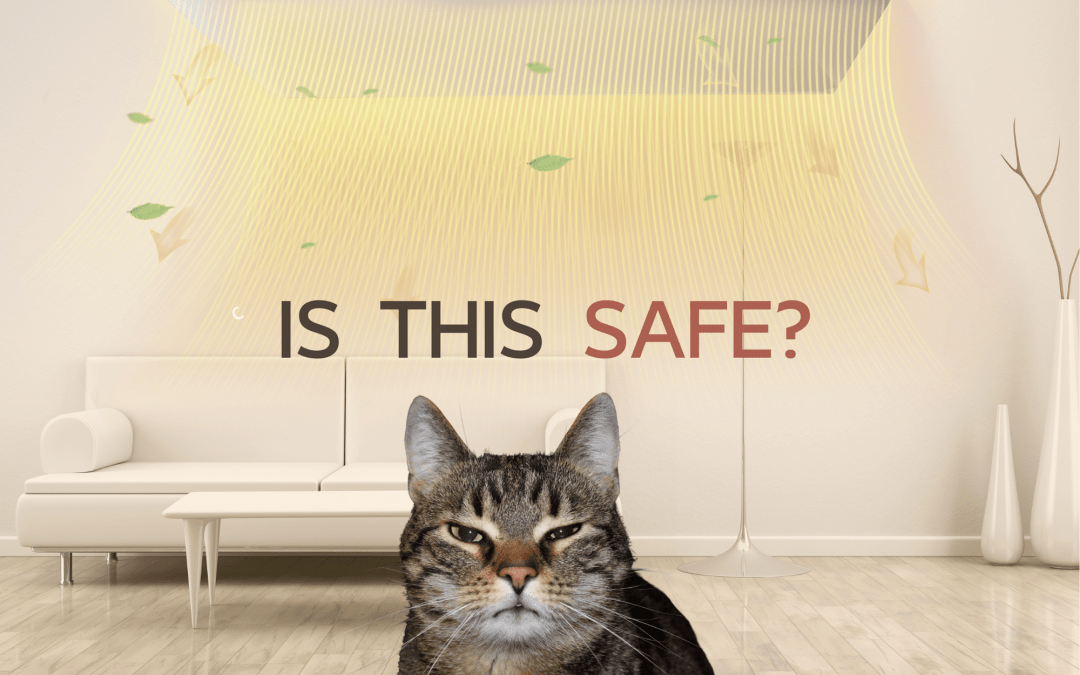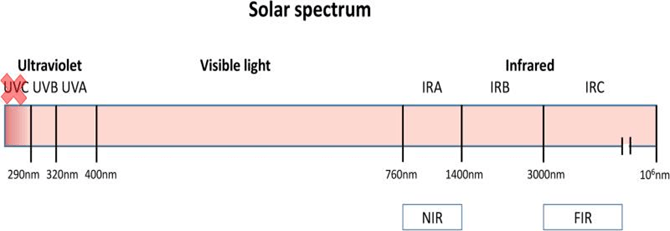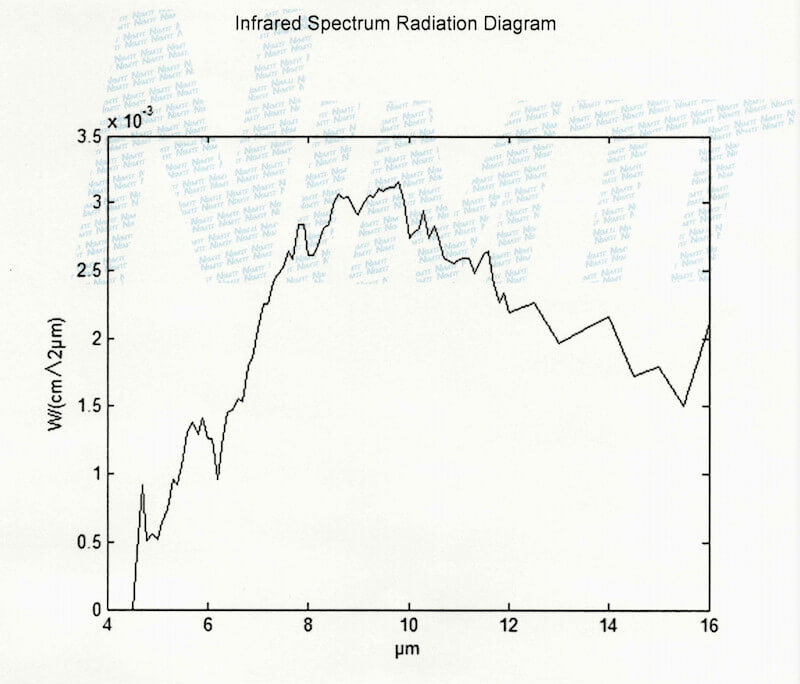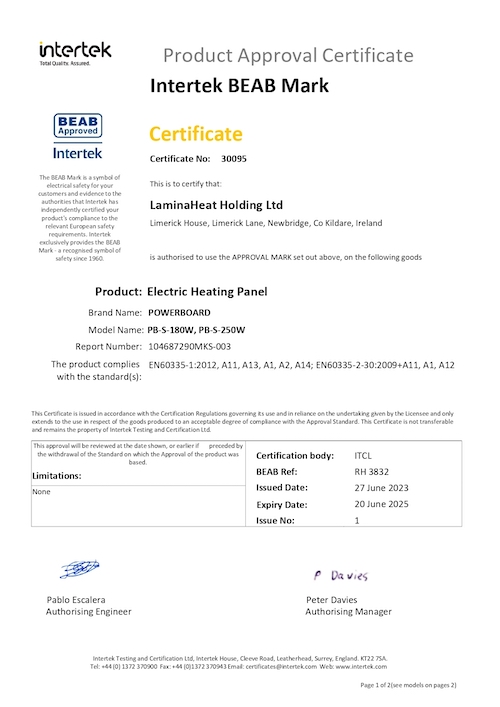Far Infrared Radiative Heating, operating within the non-ionizing radiation spectrum, is deemed safe for adults and children. Its low-energy emissions have been extensively studied and certified for safety by regulatory bodies, ensuring no risk to health or burns.
However, to better understand why Far-Infrared Radiative Heating is safe one first needs to understand how radiation works. Radiation is the transmission of energy via waves of photons (small energy packets/bundles).
Table of Contents
Is Far-Infrared Radiative Heating Safe?
The Sun's Radiation
Infrared Radiation Breakdown
What About Full Surface Radiative Heating Films?
The shorter and more frequent the waves are the more total energy they contain! In contrast the longer and less frequent the waves are the less energy they contain. This is clearly demonstrated by the below picture of the electromagnetic spectrum.
On the right side you have the shorter more energy intensive waves or ionizing radiation such as Gamma rays and X-rays. These rays hold sufficient energy to remove electrons from atoms creating charged ions and free radicals, which can lead to a large range of health complications by instigating a large diversity of chemical reactions.
On the other hand, you have non ionizing long wavelengths such as Infrared, Microwaves, and Radiowaves. As well as UV rays which lie in the intermediary between the two with shorter wavelength UV being capable of instigating chemical reactions whereas longer wavelength UV cannot. However, for our day to day lives what’s most important is understanding the types of radiative waves we are exposed to on the most frequent basis. Those being the waves emitted from the sun.
The Sun’s Radiation
The spectrum of the sun’s radiation that gets to earth is broken down into 6.8% UV, 38.9% visible light, and 54.3% Infrared. The most energy intensive waves the sun emits are UV rays, which fall into three bandwidths, C,B, and A.
UVC rays are the most energy intensive but are luckily blocked by our planets Ozone layer. UVB and UVA both penetrate the atmosphere, with UVB penetrating the skin and potentially causing DNA damage and UVA penetrating the skin deeply and leading to sunburns through excessive heat transfer.
However, once you move into the visible light and far-infrared spectrum the decreasing intensity of the waves makes them no longer capable of causing chemical reactions and also limits their ability to penetrate our skin.
What About Infrared Radiation?
Infrared radiation is mostly responsible for generating heat. When we stand underneath the sun it is the far infrared radiation that makes us feel warm. Infrared radiation is also broken down into three specific bandwidths A-B-C with A being the most energy intensive and C being the least.
For Infrared A Radiation or NIR (Near Infrared Radiation) there is still an ongoing debate on the overall safety/health effects associated with prolonged exposure to this type of radiation with some even suggesting that sunblocks should also be designed to protect against this type of radiation instead of only UV.
Infrared A Radiation is commonly experienced by people working near extremely high temperature environments (200°C+) such as ovens, furnaces, or other industrial applications. However, once you reach the B/C spectrum of the infrared spectrum also known as Far Infrared Radiation (3-25um), the negative health implications are virtually nonexistent. In fact, there is evidence supporting the health benefits of the infrared radiation spectrum, which is utilized in the medical field for various treatments. These treatments include:
- Stimulating neural tissue
- Suppressing the growth of cancer cells
- Providing neuroprotection to the brain
- Reducing wound healing time
- Providing pain relief to muscles
- Stimulation blood flow
This can largely be attributed to the decreased total energy capacity of these waves. This in turn makes Far-Infrared Radiative Heating a very safe source.
For a more in-depth understanding of how Far Infrared Heaters work, including the science behind their safety, you can explore our article.
What About Full Surface Radiative Heating Films?
This is also why we specifically designed our full surface ceiling/wall carbon fiber heating films to reach surface temperatures of 45-55°C allowing us to maximize the Far-Infrared heating effect, while also not burning the human skin when touched. When we ran third party tests to identify the exact spectrum that our films radiated in, data showed them to lie squarely in the Far-Infrared C spectrum 7-13um.
LaminaHeat’s Radiative Heating Films radiate in the Far-Infrared C Spectrum 7-13um wavelength
Meaning that the radiative heat delivery from our films is completely safe on the human body and is optimized to deliver the most comfortable and eco-friendly heating solutions!
If you’d like to know more about our one of a kind radiative heating appliances, please free to reach out and get in touch with us!
Did you know?
As well as knowing if infrared heat is safe, the safety of the mechanism that produces this wavelength has to be safe too. Our very own PowerBoard heating system unit has earned the Intertec BEAB IEC:60335-1 2012 Certification, highlighting its safety, quality, and reliability.
This certification underscores our commitment to delivering effective heating solutions for homes and businesses.
Safety Comparison Between Infrared Heaters vs. Other Heaters
In this section, we’ll be taking a practical look at the safety differences between Infrared (IR) heaters and traditional heating methods. As we navigate through the information, we aim to provide a straightforward comparison, highlighting the distinctions in technology, operation, and safety levels of heating panels.
| Infrared | Convection | Electric | |
|---|---|---|---|
| Radiation Type: | Far Infrared | N/A | N/A |
| Skin Penetration: | Limited skin penetration | N/A | N/A |
| Surface Temp: | Low | Hot | Low |
| Emissions: | No emissions | Combustion byproducts | No emissions |
| Combustion Risks: | N/A | Yes | N/A |
| Air Quality Impact: | N/A | Air circulation (dust) | Air circulation (dust) |
| Energy Efficiency: | Efficient | Less efficient | Less efficient |
| Drying Effects: | N/A | Can dry air | Can dry air |
Frequrntly Asked Questions
How does far infrared heating affect air quality?
Far infrared heating, also known as radiant heating, has minimal impact on air quality. Unlike traditional heating methods that rely on forced air systems, far infrared heating operates by emitting electromagnetic waves that directly heat objects and surfaces in a room. This means there is no need for air circulation or the burning of fuels, which can release pollutants into the air. As a result, far infrared heating does not contribute to indoor air pollution or the circulation of allergens and dust particles that can irritate the skin and eyes.
How safe is FAR electromagnetic spectrum for humans?
Far infrared heating is considered to be a safe and efficient method of heating for humans. Extensive research has shown that far infrared radiation, which is emitted by these heating systems, has numerous health benefits. It helps improve blood circulation, enhances the immune system, and promotes relaxation and stress reduction. Furthermore, unlike traditional heating methods, far infrared heating does not rely on forced air or convection currents, which can lead to the circulation of dust particles and allergens in the air. This makes it particularly beneficial for individuals with respiratory conditions or allergies. Overall, far infrared heating provides a comfortable and safe heating solution for humans while also offering potential health benefits.
How do experts evaluate the safety of infrared heating technologies?
Experts evaluate the safety of far infrared heating technologies through a comprehensive and rigorous process. Firstly, they assess the materials used in these technologies to ensure that they are non-toxic and do not emit harmful substances when heated. Secondly, experts analyze the electromagnetic radiation emitted by the far infrared heaters to ensure that it falls within safe limits set by international standards. Here is more on our infrared heaters safety and compliance!





